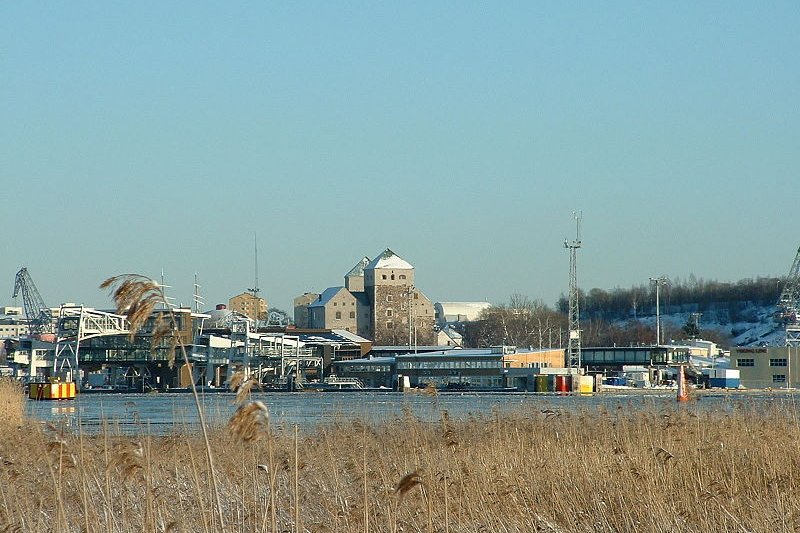 Turku, Finland
Turku, FinlandSource: https://commons.wikimedia.org/wiki/File:Turku_Ruissalosta.jpg
Author: Jan-Erik Finnberg

Turku (Swedish: Åbo) is the fifth largest city in Finland. It is located on the south of the Aura River in southern Finland. Turku covers 306.37 sq km (118.3 sq mi) and has a population of 177,000 (2011 estimate), with a metropolitan area of 303,000 inhabitants. It is in the Eastern European Time zone, which is two hours ahead of Coordinated Universal Time (UTC+2) and three hours ahead during Daylight Saving Time in summer.
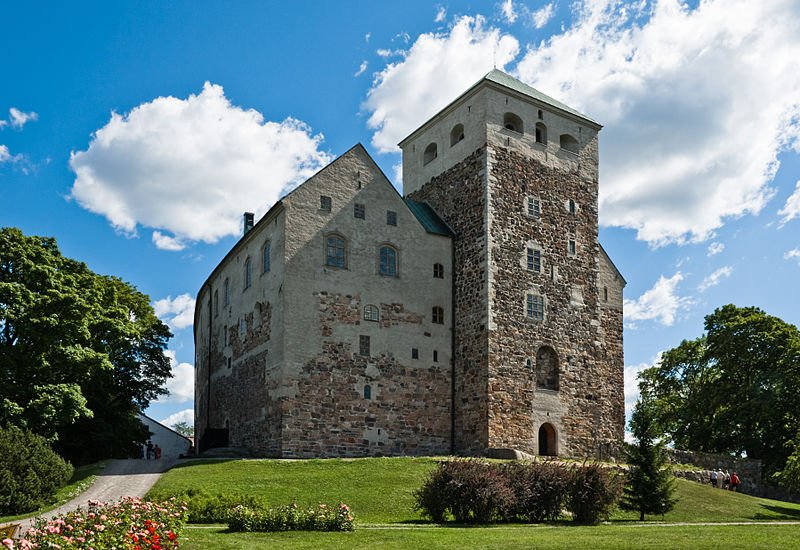 Turku Castle
Turku CastleSource: https://commons.wikimedia.org/wiki/File:Turku_Castle.jpg
Author: Markus Koljonen

The Finnish name for the city, Turku, means "market place", and is derived from Old East Slavic. The Swedish name, Åbo, means "dwelling by the river" or "the right to live [here]".
The Turku metropolitan area includes other municipalities such as Askainen, Kaarina, Lemu, Lieto, Masku, Merimasku, Mynämäki, Naantali, Nousiainen, Paimio, Piikkiö, Raisio, Rusko, Rymättylä, Sauvo, Vahto and Velkua. The city itself comprises Turku and the municipalities of Kaarina, Raisio and Naantali.
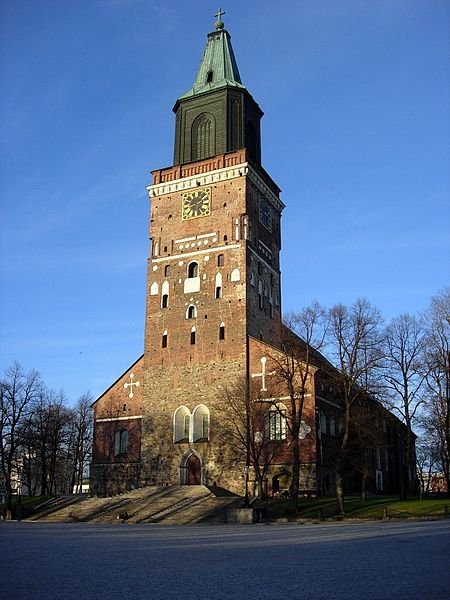 Turku Cathedral
Turku CathedralSource: https://commons.wikimedia.org/wiki/File:Turun_Tuomiokirkko.jpg
Author: Samuli Lintula

Turku experiences a hemiboreal climate. The warmest month in Turku is July, when temperature rises to an average high of 21.7°C (71.1°F). The coldes month is February, when the average low drops to -8.5°C (16.7°F). August is the wettest month, with 78.7 mm (3.09 in) of precipitation.
Turku was until around 1850 the largest city in Finland. It also served at the capital until 1812, when Helsinki became the capital. Nevertheless it is proud to be the oldest city in Finland and the first capital of the country.
Human habitation of the Turku area goes back to the Neolithic period. The city itself was established in the late 13th century. Most of its important buildings were erected during this period, among them a Dominican monastery (1249), Turku Castle (1280), and the Cathedral of Turku (1300). Turku was the seat of the Bishop of Turku, and later the Archbishop of Turku, whose realm until the 17th century included the eastern half of Sweden.
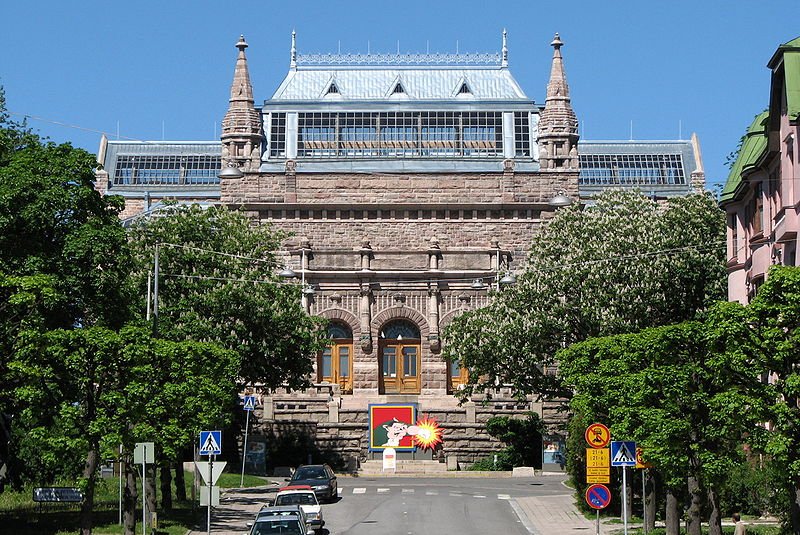 Turku Art Museum
Turku Art MuseumSource: https://commons.wikimedia.org/wiki/File:Turku_Museum_of_Art.jpg
Author: Markus Koljonen

Turku along with the rest of Finland was ceded by Sweden to Imperial Russia following the Finnish War of 1809. Turku served briefly as the capital of the Grand Duchy of Finland, until Emperor Alexander I relocated the capital to Helsinki, deeming Turku too close to Sweden.
The decline of Turku was hastened by the Great Fire of Turku which destroyed much of the city in 1827. It remained the biggest city in Finland for another 20 years or so, before it was surpassed by Helsinki, and eventually, by other Finnish cities as well.
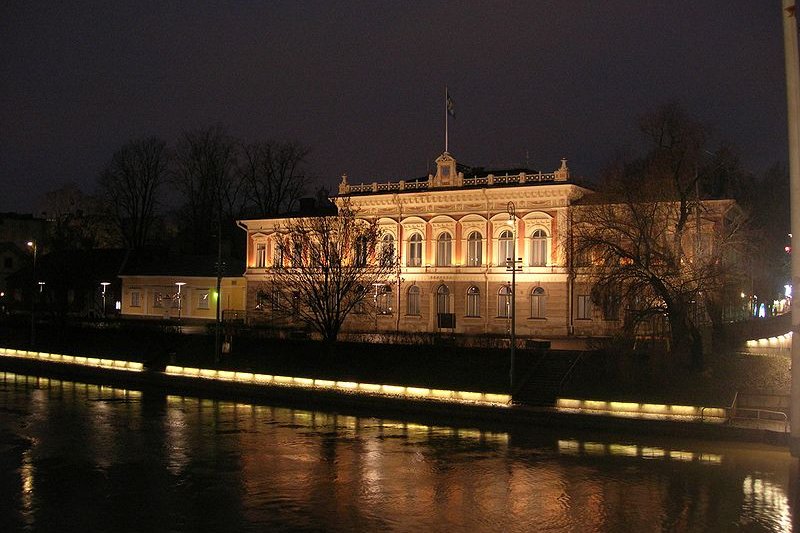 Turku City Hall
Turku City HallSource: https://commons.wikimedia.org/wiki/File:Turun_kaupungintalo_iltavalaistuksessa.JPG
Author: Lehmankukka

Today Turku is a modern, developed city, often regarded as Finland's gateway to the West. Its economy is supported by service-oriented industries. It is home to the Turku Science Park, in which over 300 biotech and info-tech industries are based.
Visiting Turku
You can take a flight to Turku, landing at the Turku Airport (TKU), about 8 km to the north of downtown. There are domestic flights from Helsinki as well as from Mariehamm, Oulu and Tampere. You can also take the Viking Line and Silja Line ferries from Stockholm to Turku.Exploring Turku
Many of the interesting sights in Turku are located around Kauppatori, or market square. These can be visited on foot. You can also rent a bicycle to cycle around. There are several spots in the city where you can do that. The rental is €12 per day or €59 per week.Places of Interest in Turku, Finland
- Aboa Vetus & Arts Nova
- B-Galleria
- Forum Marinum
- Kuralan kylämäki
- Luostarinmäki
- Ruissalo Island
- Sibelius Museum
- Turku Castle
- Turku Cathedral
- Turun taidemuseo
- Wäinö Aaltonen Museum of Art
 Latest updates on Penang Travel Tips
Latest updates on Penang Travel Tips

Copyright © 2003-2025 Timothy Tye. All Rights Reserved.

 Go Back
Go Back